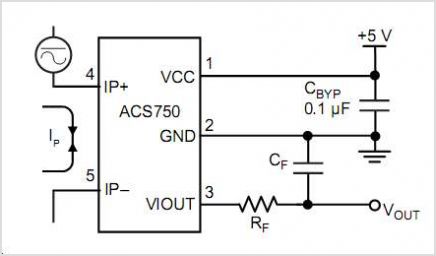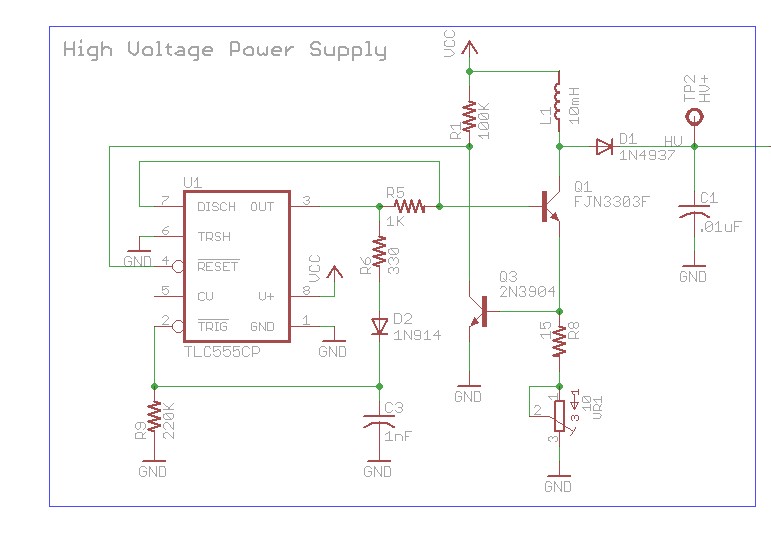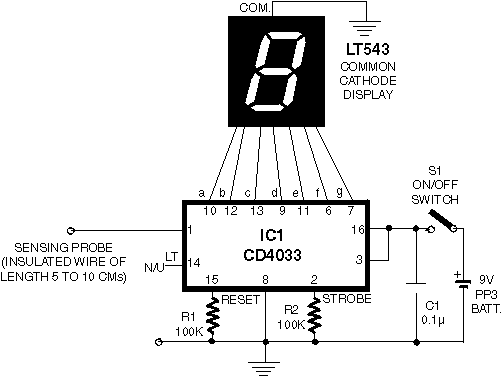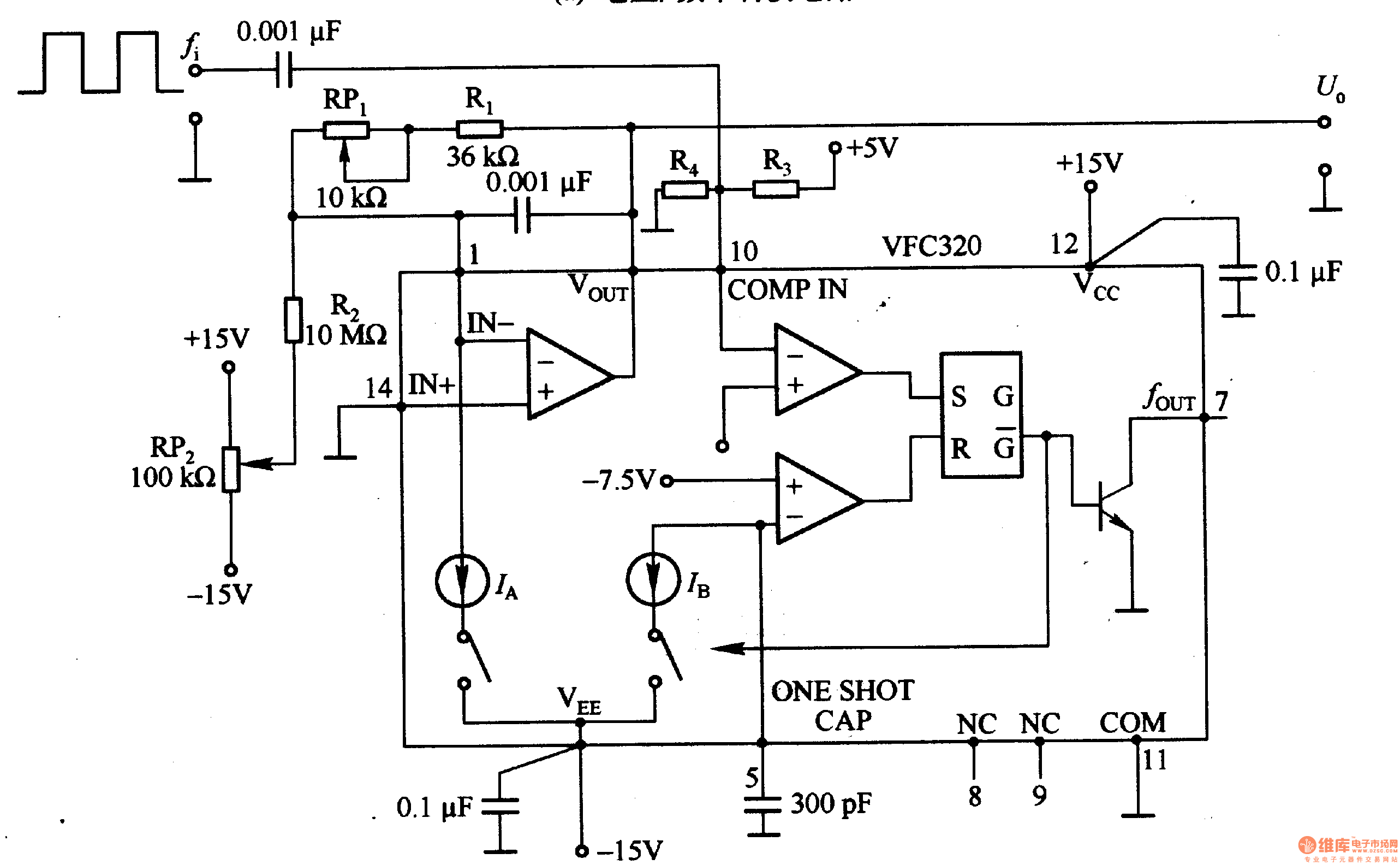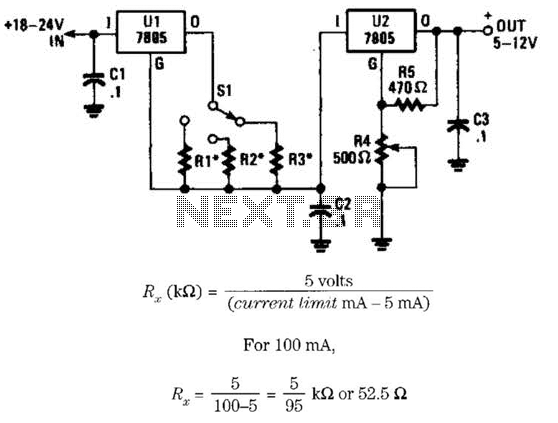
IC 723 Voltage Regulators-WorkingCircuit Applications
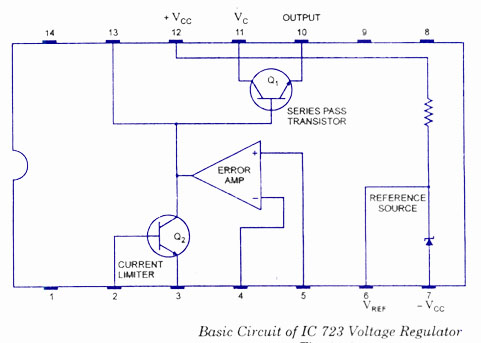
The working and block diagram of the IC 723 Voltage Regulator is provided along with the circuit diagram and applications.
The IC 723 is a voltage regulator integrated circuit that is widely used for providing a stable output voltage. It is capable of delivering output currents up to 1.5 A and can operate over a wide input voltage range, typically from 3 V to 40 V. The device features adjustable output voltage capabilities, allowing for a range of output voltages from 1.25 V to 37 V through the use of external resistors.
The block diagram of the IC 723 outlines its primary functional components, which include a voltage reference, error amplifier, output driver, and current limiting circuitry. The voltage reference provides a stable reference voltage, which is crucial for maintaining output accuracy. The error amplifier compares the output voltage to the reference voltage and adjusts the output driver accordingly to ensure that the output voltage remains constant under varying load conditions.
The output driver is responsible for supplying the necessary current to the load, while the current limiting circuitry protects the regulator from excessive current draw, thereby preventing damage to the IC. Additionally, the IC 723 includes thermal shutdown features to safeguard against overheating.
Applications of the IC 723 span various fields, including power supplies for electronic devices, battery chargers, and voltage regulation in industrial equipment. Its versatility and reliability make it a popular choice among engineers for designing stable power supply circuits.
In circuit design, the IC 723 can be configured in both linear and switching applications, depending on the requirements of the specific application. Proper selection of external components, such as capacitors and resistors, is essential for optimizing performance and achieving the desired output characteristics.The working and block diagram of IC 723 Voltage Regulators is given with Circuit Diagram, and Applications,.. 🔗 External reference
The IC 723 is a voltage regulator integrated circuit that is widely used for providing a stable output voltage. It is capable of delivering output currents up to 1.5 A and can operate over a wide input voltage range, typically from 3 V to 40 V. The device features adjustable output voltage capabilities, allowing for a range of output voltages from 1.25 V to 37 V through the use of external resistors.
The block diagram of the IC 723 outlines its primary functional components, which include a voltage reference, error amplifier, output driver, and current limiting circuitry. The voltage reference provides a stable reference voltage, which is crucial for maintaining output accuracy. The error amplifier compares the output voltage to the reference voltage and adjusts the output driver accordingly to ensure that the output voltage remains constant under varying load conditions.
The output driver is responsible for supplying the necessary current to the load, while the current limiting circuitry protects the regulator from excessive current draw, thereby preventing damage to the IC. Additionally, the IC 723 includes thermal shutdown features to safeguard against overheating.
Applications of the IC 723 span various fields, including power supplies for electronic devices, battery chargers, and voltage regulation in industrial equipment. Its versatility and reliability make it a popular choice among engineers for designing stable power supply circuits.
In circuit design, the IC 723 can be configured in both linear and switching applications, depending on the requirements of the specific application. Proper selection of external components, such as capacitors and resistors, is essential for optimizing performance and achieving the desired output characteristics.The working and block diagram of IC 723 Voltage Regulators is given with Circuit Diagram, and Applications,.. 🔗 External reference
